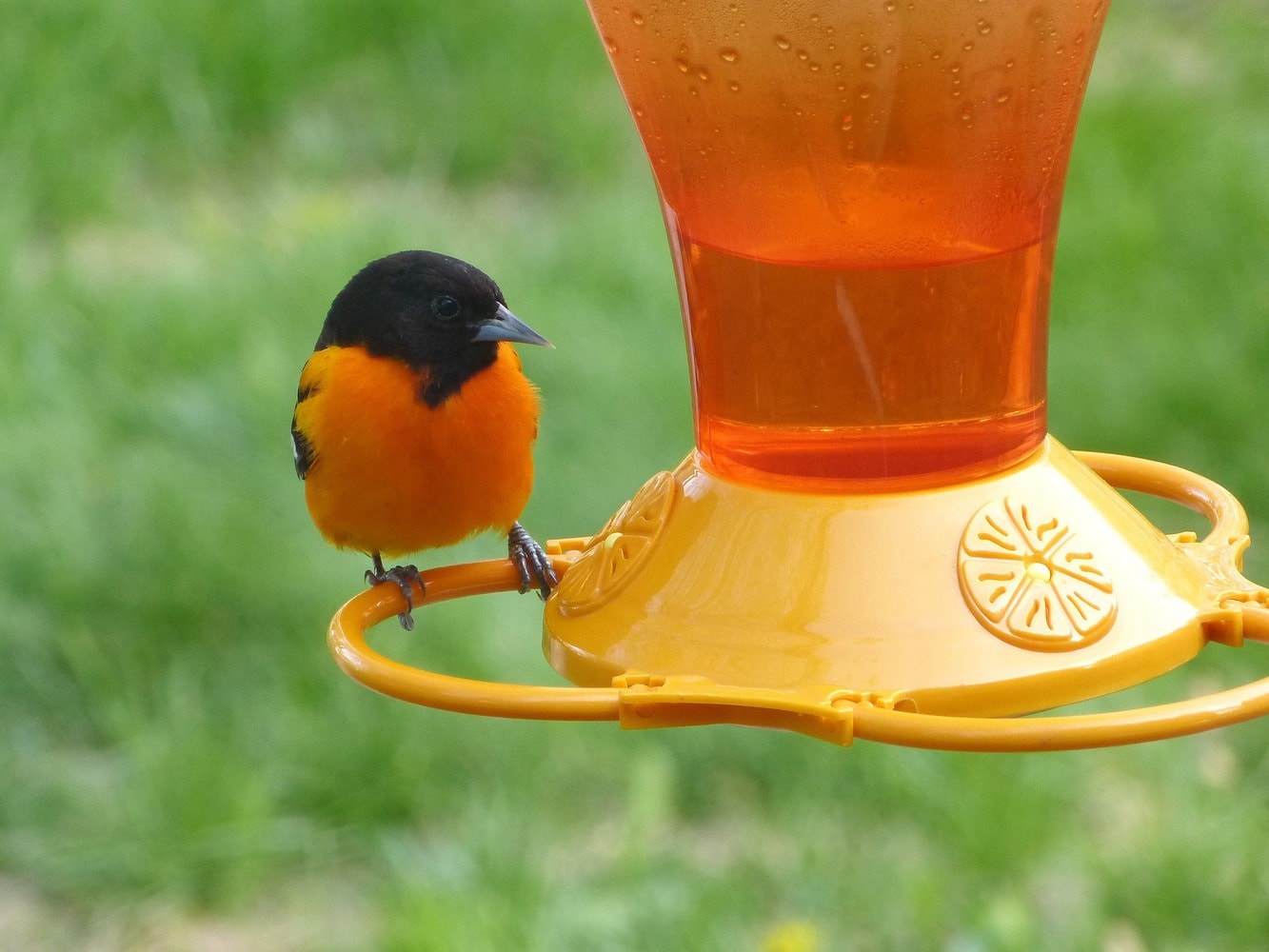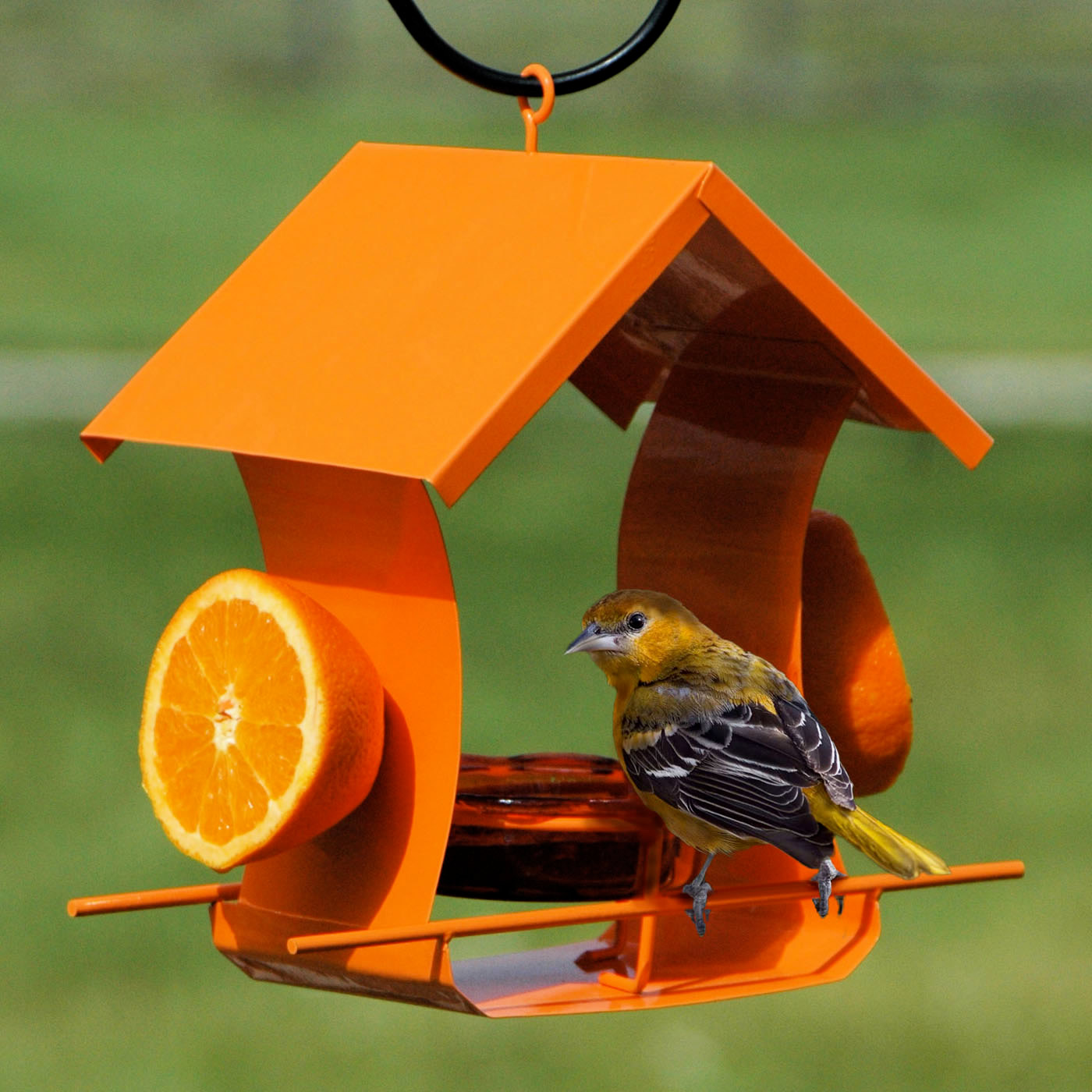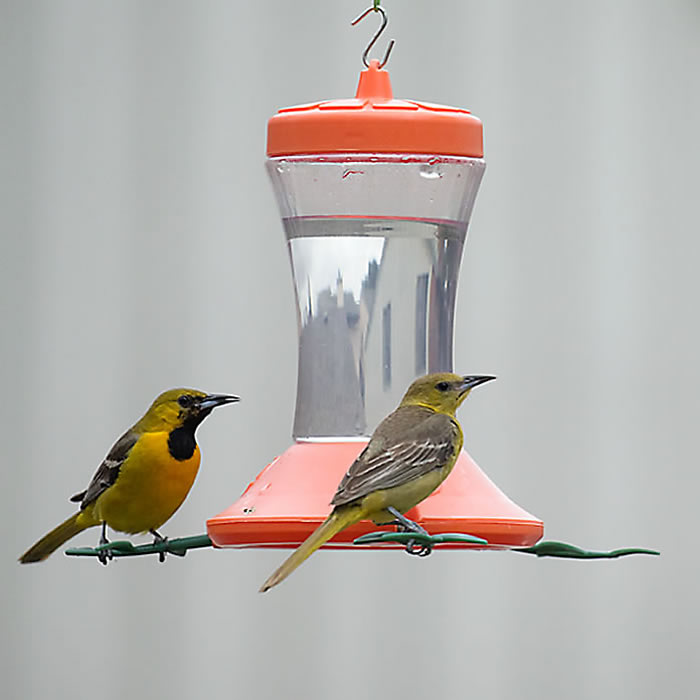

They live in open conifer forests but stay hidden in the canopy, despite their bright coloring. Winter is spent in Mexico and Central America. They can be seen during migration in the east and south of this range. They breed in western US states and into Canada. Western Tanagers have a flaming orange-red head, yellow body, and black wings. Also, plant native berry plants such as mulberries or chokeberries. To attract Orchard Orioles to your yard try hummingbird feeders or platform feeders with cut oranges or mango. they will also drink nectar from flowers and eat fruit such as mulberries and chokeberries. Their diet is mostly insects such as ants, caterpillars, beetles, and grasshoppers, as well as spiders. Preferring open woodland, Orchard Orioles can also be found along river banks and open shrubland and farms as well as backyards. Orchard Orioles breed in central and eastern states in summer, before migrating south to Mexico and Central America. Males look very different with black heads and backs and with reddish undersides.


Orchard Orioles females are greenish-yellow overall, paler underneath and darker on the back, with darker wings and white wingbars. In winter they will also eat fruit and seeds. Prothonotary Warblers eat spiders, insects and snails. They breed in wet wooded areas that are flooded, near streams, or in swamps. Unusual for warblers, Prothonotary Warblers breed in eastern and southeastern states before migrating to Central and South America. Prothonotary Warblers are bright yellow with blue-gray wings and tails. Streams and wet woodlands are your best bet. The males are bright yellow and blue-winged so a bright contrast to watch for. They breed over the eastern and southeastern states and spend the winter in Florida and the Caribbean and some coastal areas in Central America.Ī warbler that breeds in eastern US states so more chances to spot them.

Female Prairie Warblers are duller in color. They have black streaks on the sides and a dark semicircle under the eye. These small songbirds are olive green on the back and yellow on the throat and belly. You can attract more Lesser Goldfinches to your yard with sunflower seeds and nyjer in tube feeders or platform feeders. They forage for seeds, especially sunflower seeds, but also fruits from elderberry, coffeeberry, and buds from cottonwoods, willows, sycamores, and alders. Lesser Goldfinches can be found in large flocks in open habitats including thickets, weedy fields, forest clearings parks, and gardens. Lesser Goldfinches live in the Southwest and Westcoast all year, but some may move down from higher elevations in winter. Females have olive backs and are more dull yellow underneath. They are darker on the back and with yellow bellies and chests. Lesser Goldfinches are tiny bright yellow and black songbirds with long pointed wings and short notched tails. Western Meadowlarks can be found foraging for insects and seeds from weeds and seeds, on the ground alone or in small flocks in grasslands, meadows, and fields. Those in the west and midwest remain all year. Western Meadowlarks are related to blackbirds and are about the size of a Robin with shades of brown and white upperparts and with a black V-shaped band across the bright yellow chest that turns gray in winter.īreeding in northern U.S and Canada before moving to more southern states. This is probably what makes them so popular, so popular in fact that they are the state bird of 6 states. Western Meadowlarks with their bright yellow bellies and melodious song can brighten up your day. They are also common in suburbs, parks, and backyards. They can be found in weedy fields and overgrown areas foraging for sunflower, thistle, and aster plants. They breed in Canada and the Mid-West and Canada before migrating to southern states, they remain all year in the rest of the U.S. The females are more dull brown as are males in winter.Īmerican Goldfinches can be found in most of North America. American Goldfinches are popular birds with the males bright yellow and black coloring in spring.


 0 kommentar(er)
0 kommentar(er)
